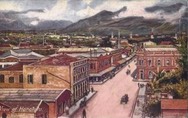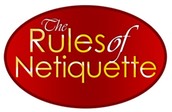1908-1920 20,000 Japanese, Okinawan and Korean women arrived as picture brides. These women changed the demographics of the plantation communities from primarily single male laborers to mixed families and laborers. Their work in the fields, at home and the communities ensured the economical survival of their familes and the development of a sustained family community on the sugar plantations.
1908 when the “Gentlemen’s Agreement” prohibited the travel of Japanese to Hawaii and the US Mainland, the existing population of mostly male Japanese were left with no options to marry and start a family. The agreement allowed wives and children to enter the US. Through this loophole, many of these male Japanese plantation workers could arrange a marriage through photographs prior to their brides’ arrival in the US.
From the encyclopedia.densho.org article: The picture brides were usually 10 to 15 years or more younger than their prospective husbands. Some men forwarded photographs taken in their youth or touched up ones to conceal their age. They also exaggerated their own attractiveness as future husbands by describing their occupation as follows: sharecropper as landowning farmers; small shopkeepers as wealthy merchants; hotel bellboys as elevator engineers. The brides had no way to verify the information before meeting their spouses.
These women worked in field operations when they could; however, when they became pregnant and gave birth, they usually moved on to other work to balance child care and sustain income for the family. They capitalized on gender inequities to work in traditional female occupations as laundresses, cooks, and seamstresses. Some of these women had professional training in fields like midwifery and they were respected and known throughout the plantations for their expertise. They also moved into male dominated industries such as barbering.
Most brides stayed with their husbands, but some divorced their husbands because the husbands were alcoholics and/or abused their wives for not wishing to prostitute herself to provide more income for the husband. Many of these picture brides had limited English skills, no relatives to turn to for help and were unfamiliar with territorial legal system.
Honolulu Advertiser, 5 Apr 2009 article, “She was their light”: Yeiko Mizobe So established a protective shelter in Honolulu for Japanese women. Many of them were picture brides. From about 1895 to 1905, she offered sanctuary to more than 700 abused women. In 1905, So opened another shelter that over the years served nearly 400 neglected children.
Yeiko Mizobe So was born in 1865 in Fukuoka City, Japan. She was widowed in her early 20s after 6 months of marriage. She was a Christian convert brought to Hawai’i by Rev. Orramel Hinkley Gulick who worked closely with the Honolulu Church, predecessor of Nu’uanu Congregational Church. Soʻs social service work was supported by the Nu’uanu Womenʻs Christian Society.


